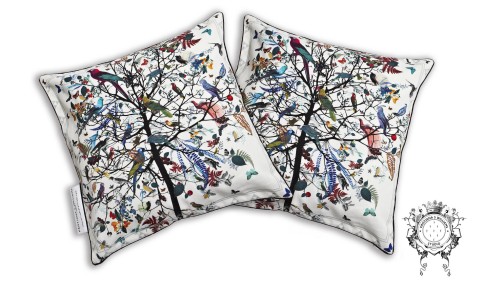
Make your home come alive with affordable art
Let inspiration, intrigue, imagination and your art be your guide when looking for the perfect place to display your collectibles at home
Art is for everyone, say the organisers of down-to-earth art events such as the Affordable Art Fair, held recently in Hong Kong. But loving it, and living with it, may not be the same. A home is not a gallery, and arranging artworks in a confined space is an art in itself.
Designers say to "go with the flow": buy what you like, without worrying too much about where it will go in the home. Given that you cannot buy every piece that takes your eye, we asked designers what they do to bring it all together.
There are many ways in which you can show art, and many places as well. Consider them all - including the floor, says Camilla Hewitson, Affordable Art Fair director (Hong Kong and Singapore), who even has sculptures in her bathroom and on the dining room table. Her rule of thumb is to forget convention, and let the art lead you.
In my front room I have three smaller works ... not perfectly aligned
"When it comes to walls," says Hewitson, "people often assume you have one big picture. In my front room I have three smaller works put together in a sort of grille, not perfectly aligned, in three very different styles."
Her juxtaposition of works, by a Korean, an Australian and a Vietnamese, shows how mediums and styles can be mixed in a multiple artwork collaboration. This works well in a smaller room, Hewitson says. "It appears bigger if you see it as a whole, but you have multiple pieces which make it more interesting."
Before hanging any key pieces, though, she advises having two people hold the artwork in place first, while standing back to gauge how it will look.
From her own experience of starting with smaller, affordable pieces, Hewitson discovered just how much impact the choice of frame can make. "Floating" a print in a contemporary boxed frame, with a border adding space, is "a clean way of taking an artwork, and giving it a huge amount of impact". Listen to the suggestions of your framer: "These guys are artisans in themselves."
Background colour can be powerful, Hewitson has found. "Once I painted my living room wall in a grey colour. I re-hung the artworks … and that made such a difference because the white frames really popped."
She is also a realist: large-screen televisions are a fact of life in most living rooms, so Hewitson dilutes its presence by artfully surrounding hers with sculptures.
"Exciting new emerging artists from tiny hidden studios around the globe are now selling their prints online," she says.
Just be vigilant about quality, checking sites for information on the printmaking process (for example is it a fine art, giclee or hand-pulled print, or a basic digital, laser print?); the type of paper used - cotton rag archival art paper is more substantial and richly textured than other inkjet papers, and longer-lasting; and also the weight: heavier paper (measured by gsm, or grams per square metre) gives a print more rigidity, and allows for greater ink penetration and detailing.
"More often than not, price is a good indicator of what you are getting," Timbrell says.
Before arranging, her advice is to size up the room: where do your eyes naturally fall? These are the key areas where you should be displaying and featuring art.
"If you are tight on hanging space but would still love to create a home that is creative and artistic, you just need to think outside the box a little," Timbrell says.
Quirky, eclectic displays of antique, vintage and modern plate art can be hung on walls, or displayed on dressers or cabinets.

Sculptures, taxidermy, or other precious and unique artistic pieces "can look fantastic popped into a glass bell dome and then placed on a dresser as part of a vignette", she says.
Even cushions and rugs can be "beautiful textile art in their own right". For example, works by Icelandic artist Kristjana Williams, who recently exhibited at Design Shanghai, have been translated into a range of textiles, digitally printed on to both silk and cotton cushions, all handmade and of the highest quality.
"These pieces can seem pricey at over A$150 (HK$1,000-plus from Everything Begins), however as limited-run pieces, they are highly coveted and art and design lovers are willing to pay to make big statements on their sofas, beds and other furnishings," says Timbrell.
Rugs can be hung as wall art, with a growing trend for one-off, bespoke pieces "using anything you wish as the design inspiration - a piece of fabric or a photograph for example".
Designer wallpapers can look amazing when teamed with art and other pieces, Timbrell says. "Don't be afraid to mix it up, the more eclectic [is] often the better. It will spark intrigue and it is intrigue that makes a room sing."

